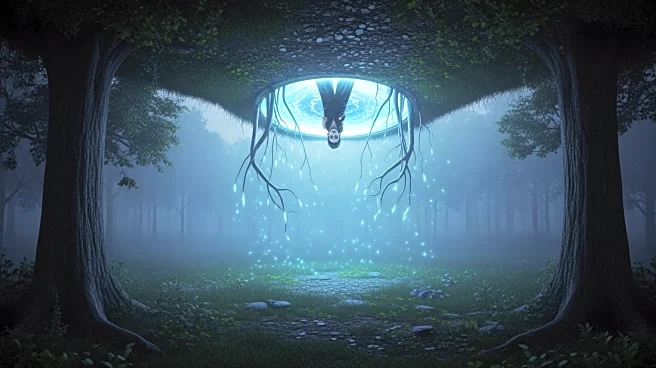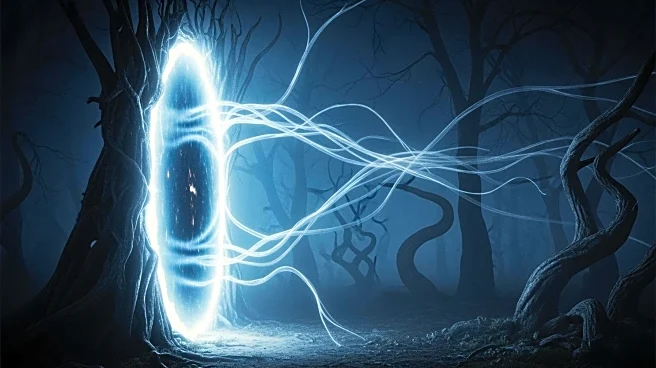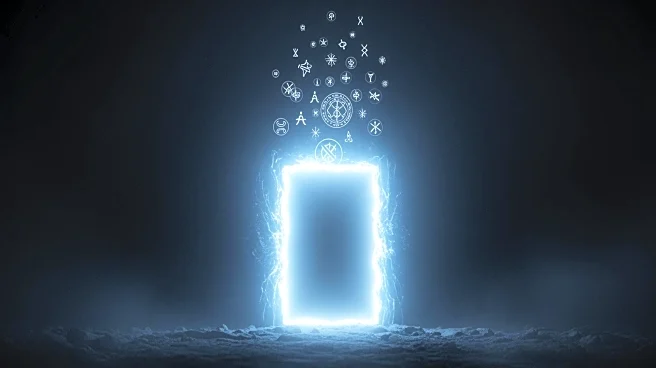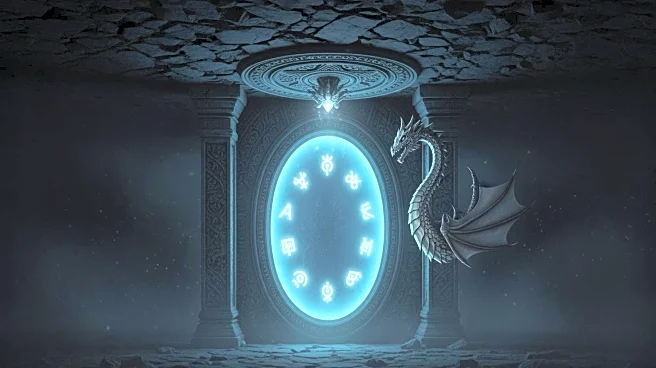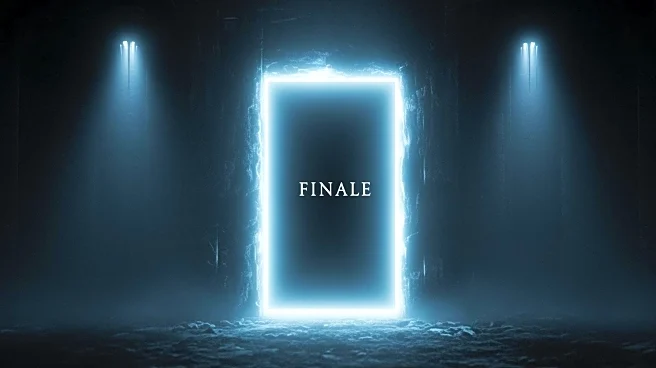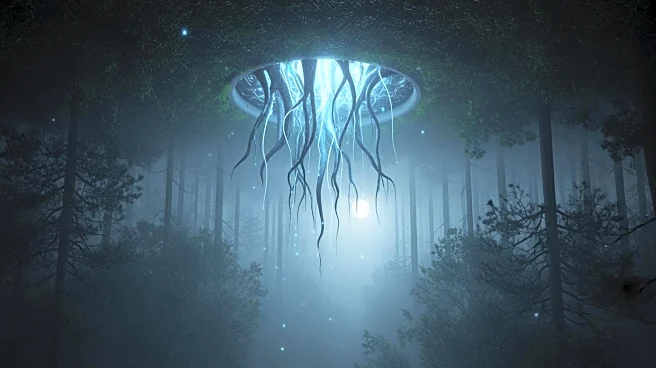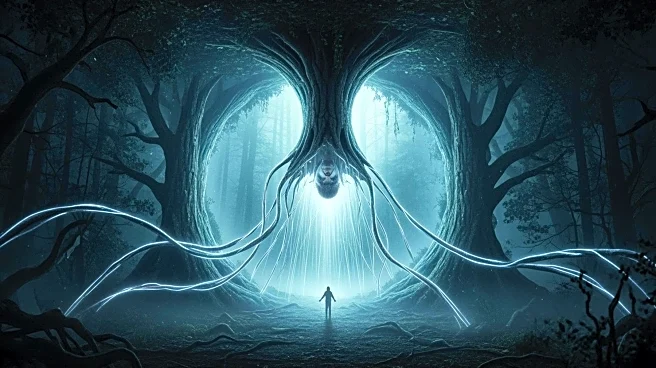What's Happening?
The creators of 'Stranger Things' have revealed that the upcoming fifth season will feature an 18-month time jump from the events of the fourth season. This announcement comes as fans eagerly anticipate
the series' conclusion, which is set in the fictional town of Hawkins during the 1980s. The previous season ended with the antagonist Vecna opening the dimensions of the Upside Down, significantly impacting Hawkins. The show's creators, the Duffer Brothers, have also discussed the possibility of releasing the finale in theaters to enhance the viewing experience, given the substantial investment in sound and picture quality. The final season is reported to have a budget between $400 to $480 million, making it one of the most expensive television productions to date.
Why It's Important?
The decision to include a significant time jump in the final season of 'Stranger Things' could have a major impact on the narrative and character development, potentially altering fan expectations. The show's substantial budget underscores its cultural significance and the high stakes involved in its production. The creators' consideration of a theatrical release for the finale highlights the evolving landscape of television consumption, where streaming services and traditional cinema intersect. This move could set a precedent for future high-budget series finales, influencing how audiences engage with serialized storytelling.
What's Next?
As the release of the final season approaches, fans and critics alike will be watching closely to see how the time jump affects the storyline and whether the series can avoid the pitfalls experienced by other popular shows in their final seasons, such as 'Game of Thrones'. The potential theatrical release of the finale could also spark discussions about the future of television distribution and the role of cinemas in showcasing high-profile series. The show's conclusion will likely generate significant discourse regarding its impact on the television landscape and its legacy in popular culture.


